Hubble and Webb Deliver the Most Colorful View of the Universe Ever
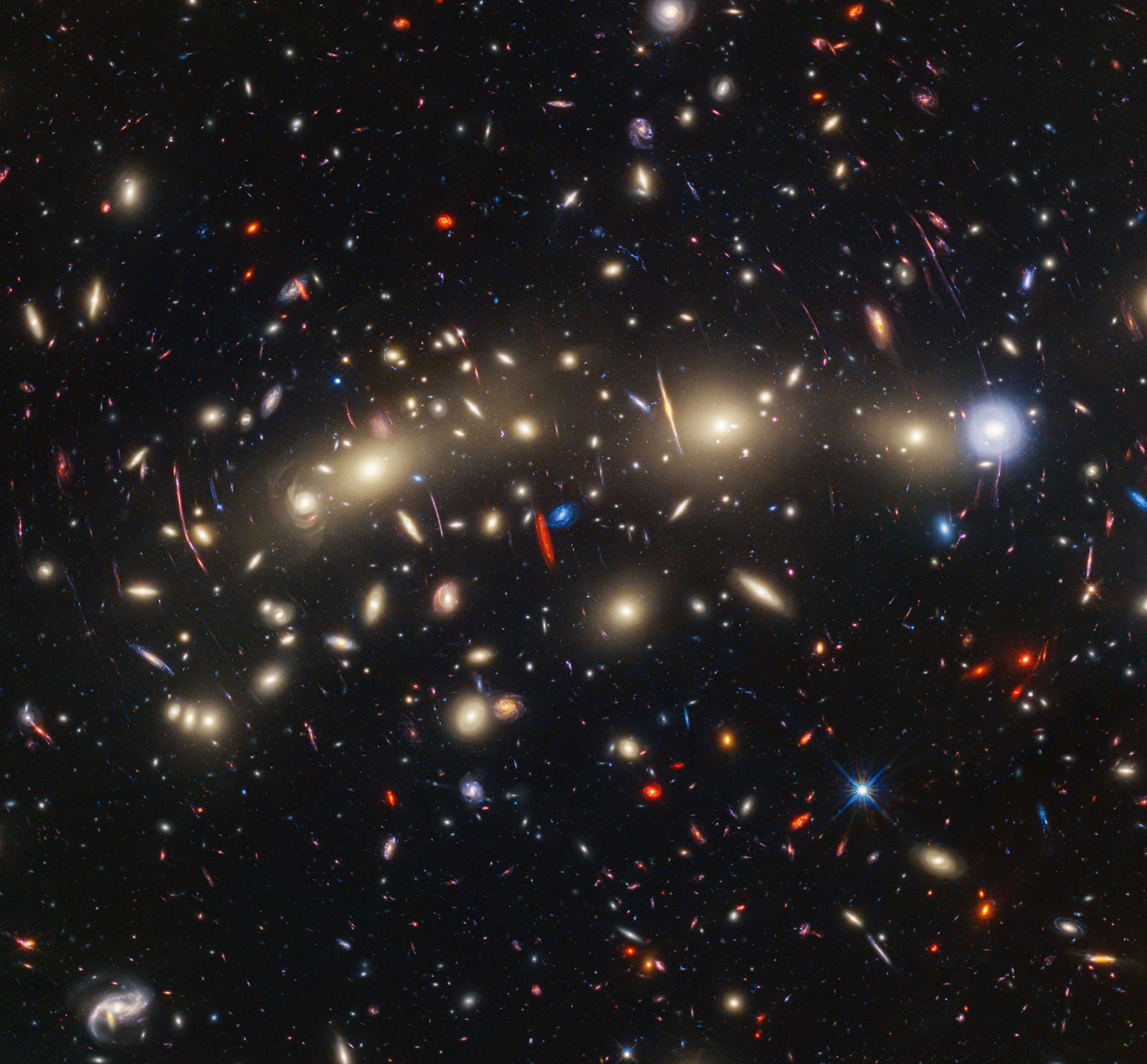
Despite the somewhat familiar narrative that the James Webb Space Telescope has been built to supplant the aging Hubble Space Telescope, the two orbiting observatories regularly collaborate. Scientists have now combined data from Hubble and Webb to create the most colorful view of the Universe ever.
The space telescopes united their distinct imaging technologies to study an expansive galaxy cluster called MACS0416. The resulting “panchromatic” composite image combines visible and infrared light to “assemble one of the most comprehensive views of the Universe ever obtained,” says the European Space Agency’s (ESA) Hubble site.
“The image reveals a wealth of details that are only possible by combining the power of both space telescopes. It includes a bounty of galaxies outside the cluster and a sprinkling of sources that vary over time, likely due to gravitational lensing — the distortion and amplification of light from distant background sources,” explains the ESA.
MACS0416 is a galaxy cluster located approximately 4.3 billion light-years from Earth. The Solar System is nearly 4.6 billion years old, so the light reaching Earth from MACS0416 today began its journey through the cosmos not long after the Solar System formed. The colorful cluster also enables Hubble and Webb to see even older light because of gravitational lensing.
As PetaPixel has explained, the colors in deep space images like this new one are not precisely accurate, but they are rooted in scientific principles that reflect how human vision works. The cameras on Hubble and Webb do not see space in the same wavelengths that people’s eyes do and do not see in color, so individual wavelength filters are assigned colors during post-processing that reflect natural vision.
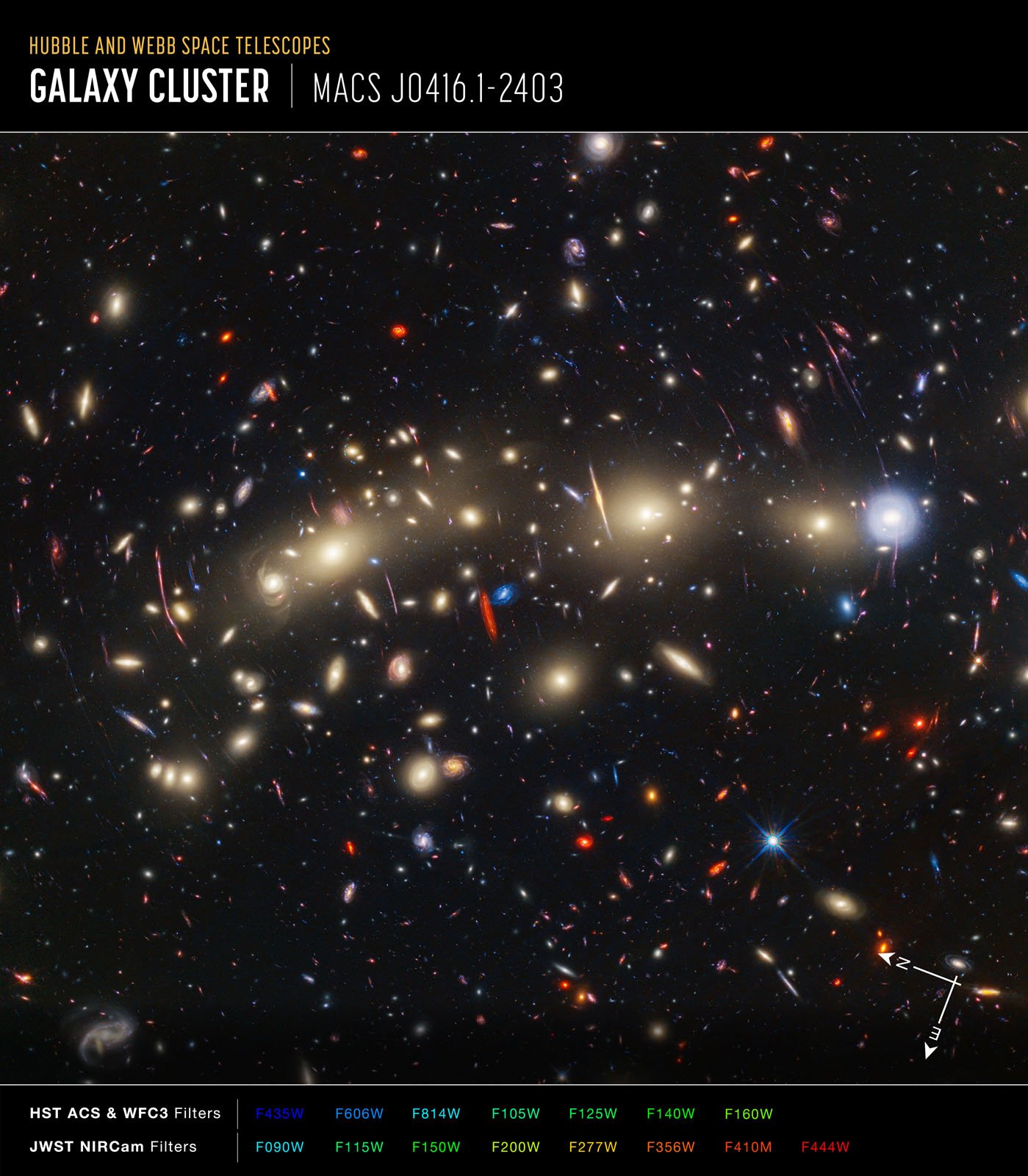
In the case of this beautiful new composite, the shortest wavelengths of light were assigned to the blue channel, while the longest wavelengths were turned red. Intermediate wavelengths are green. This new composite is unique because the total wavelength range is especially extreme, ranging from 0.4 to five microns, which ESA says “could be described as one of the most colorful views of the Universe ever created.”
The colors in the photo also reflect something important about the proximity of the visible galaxies. The bluest galaxies are “relatively nearby” and often exhibit intense star formation, which is best detected by Hubble. On the other hand, Webb shows its strengths with more distant galaxies, which are redder and often include considerable dust. Webb’s infrared imaging technologies enable it to peer through this dust in a way that Hubble cannot.
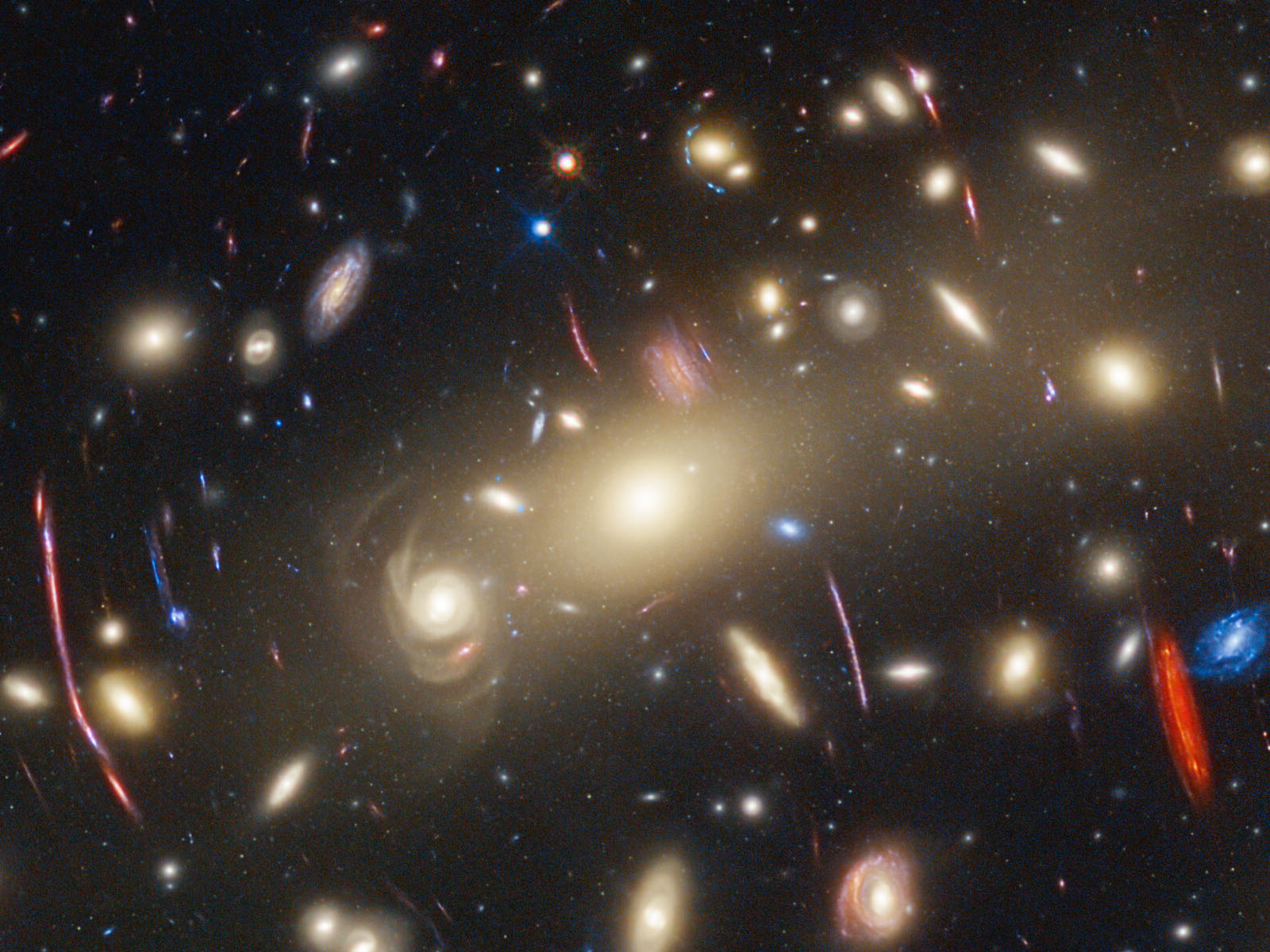
The image is also very rich in scientific data. The research team behind the image has identified supernovae and even some extremely distant individual stars that the gravitational forces in MACS0416 have magnified. Researchers have also been able to see new details that were outright impossible to detect using only Hubble — or, for that matter, just Webb.
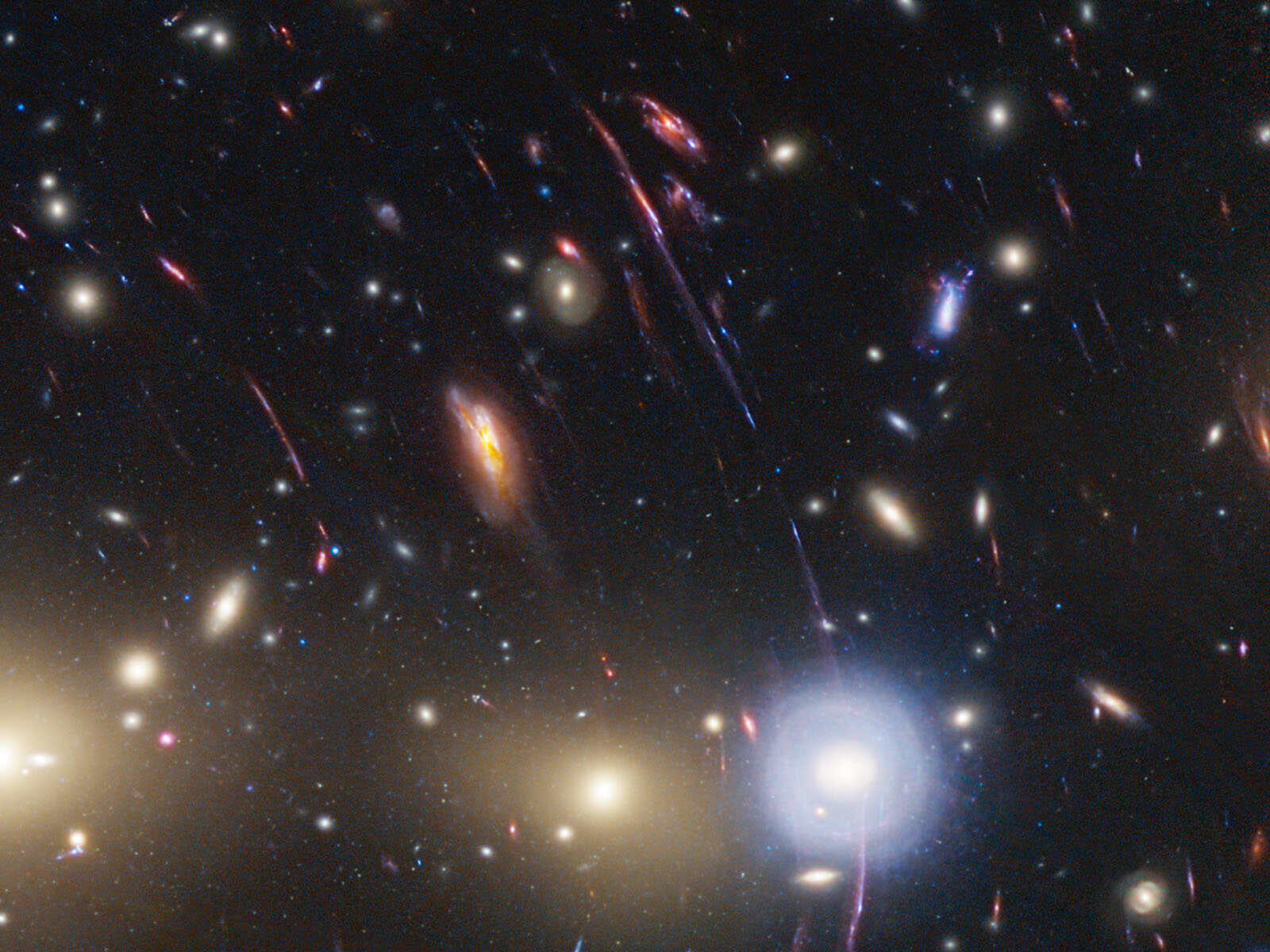
“While the new Webb observations contribute to this aesthetic view, they were taken for a specific scientific purpose. The research team combined their three epochs of observations, each taken weeks apart, with a fourth epoch from the CANUCS (CAnadian NIRISS Unbiased Cluster Survey) research team. The goal was to search for objects varying in observed brightness over time, known as transients,” explains ESA.
The research team located 14 “transients” in the broad field of view, and a dozen of them were in three galaxies that were highly magnified due to gravitational lensing. The remaining two transients are also located in magnified background galaxies and are believed to be supernovae.
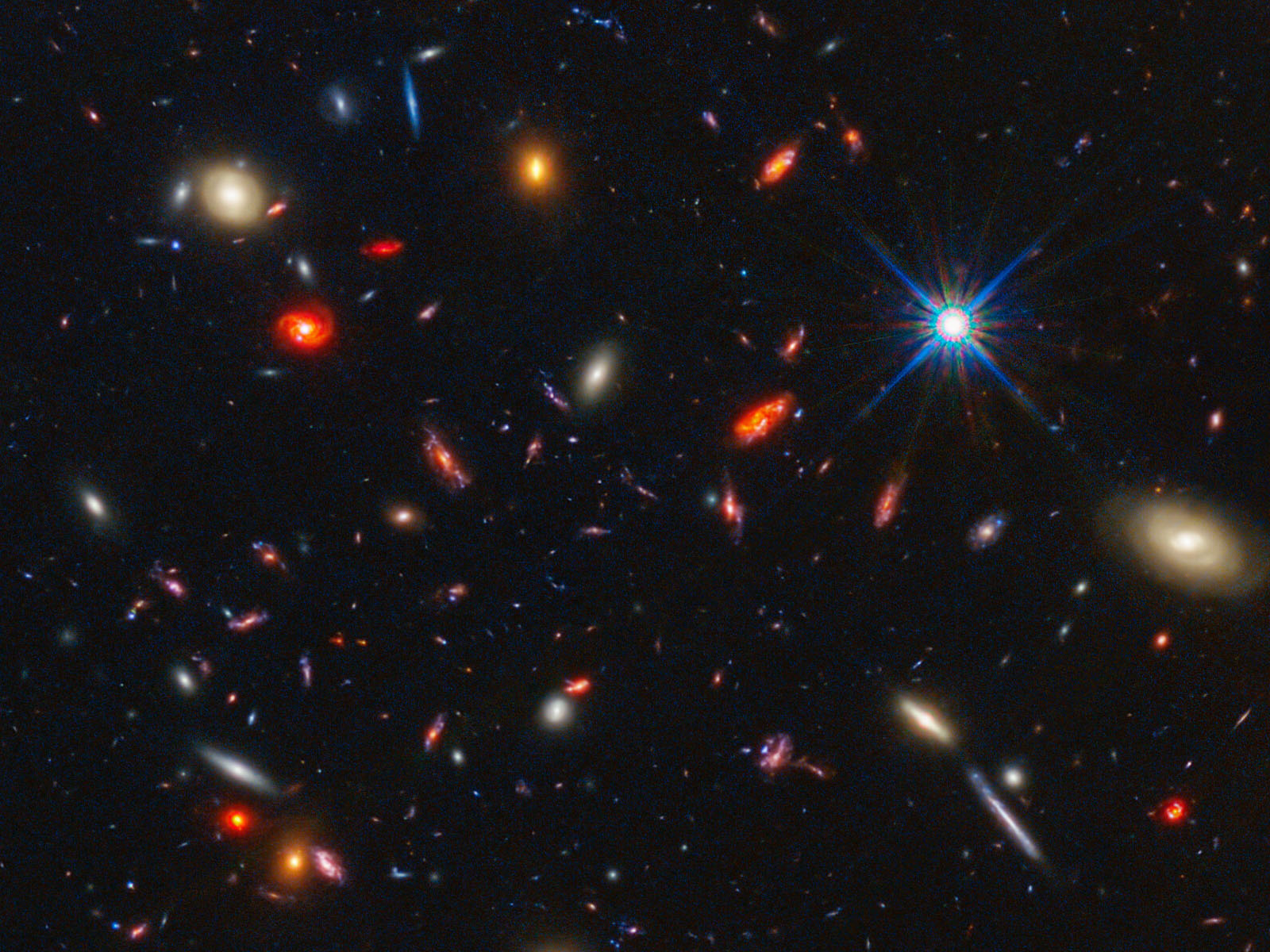
“The finding of so many transients with observations spanning a relatively short timeframe suggests that astronomers could find many more transients in this cluster and others like it through regular monitoring with Webb,” says ESA.
Of the 14 identified so far, one has stood out to researchers. “Located in a galaxy that existed about 3 billion years after the Big Bang, it is magnified by a factor of at least 4000. The team nicknamed the star system Mothra in a nod to its ‘monster nature,’ being both extremely bright and extremely magnified. It joins another lensed star that the researchers previously identified and that they nicknamed Godzilla,” ESA explains. Fans of Japanese cinema will of course recognize the names Godzilla and Mothra.
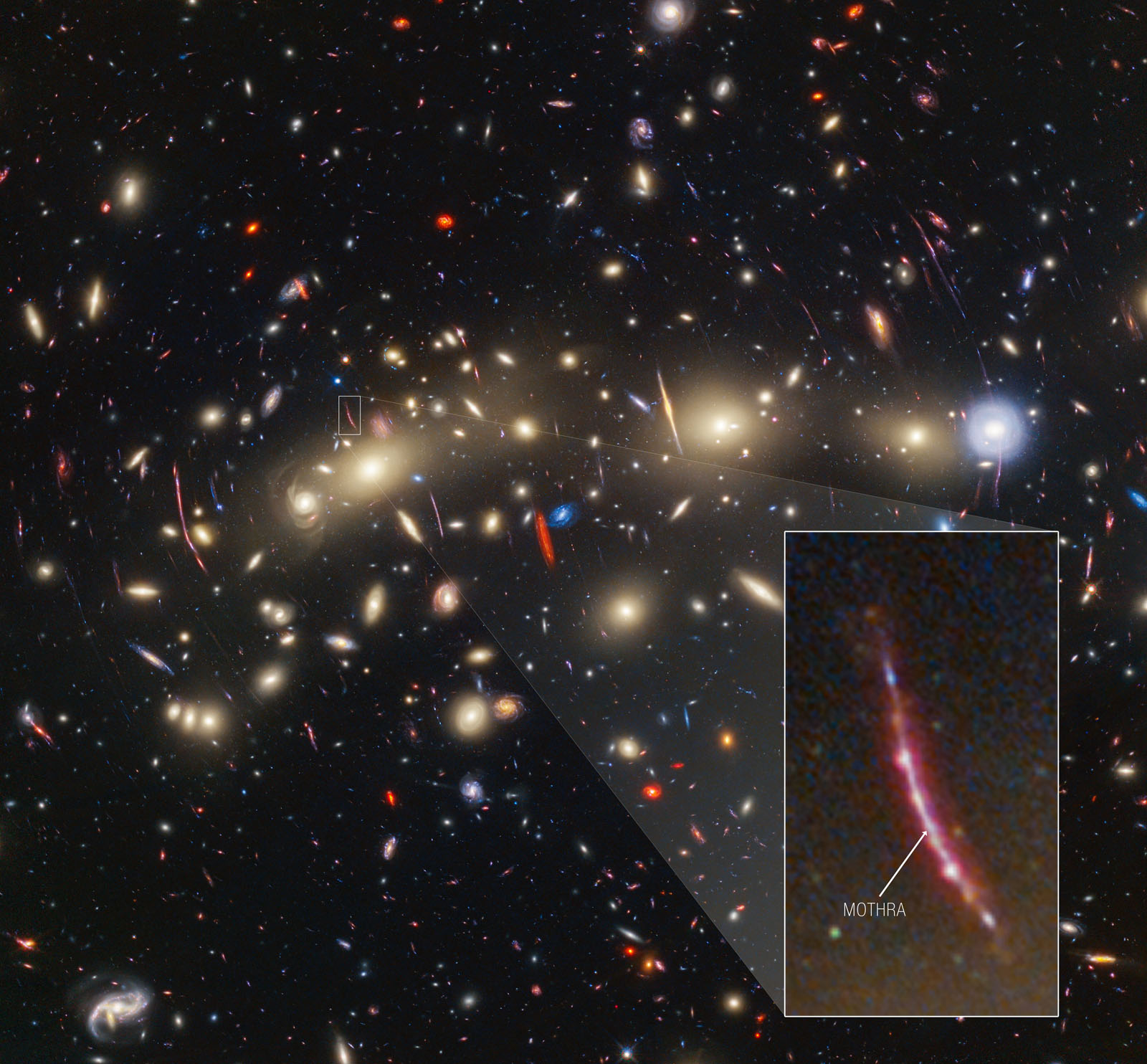
ESA explains: “This image of galaxy cluster MACS0416 highlights one particular gravitationally lensed background galaxy, which existed about 3 billion years after the big bang. That galaxy contains a transient, or object that varies in observed brightness over time, that the science team nicknamed ‘Mothra.’ Mothra is a star that is magnified by a factor of at least 4,000 times. The team believes that Mothra is magnified not only by the gravity of galaxy cluster MACS0416, but also by an object known as a ‘milli-lens’ that likely weighs about as much as a globular star cluster.”
Interestingly, Mothra is also present in Hubble observations from nine years ago. Given that the gravitational lensing magnification factor — 4,000 — is so high, it is exceptionally unusual for the required alignment to persist for nearly a decade.
As for why this is the case, one possible explanation is that an additional object in the foreground adds more magnification. The exact nature of this “milli-lens,” as it is called, is unknown, but scientists estimate that the magnifying object likely has a mass between 10,000 and 1 million times that of the Sun.
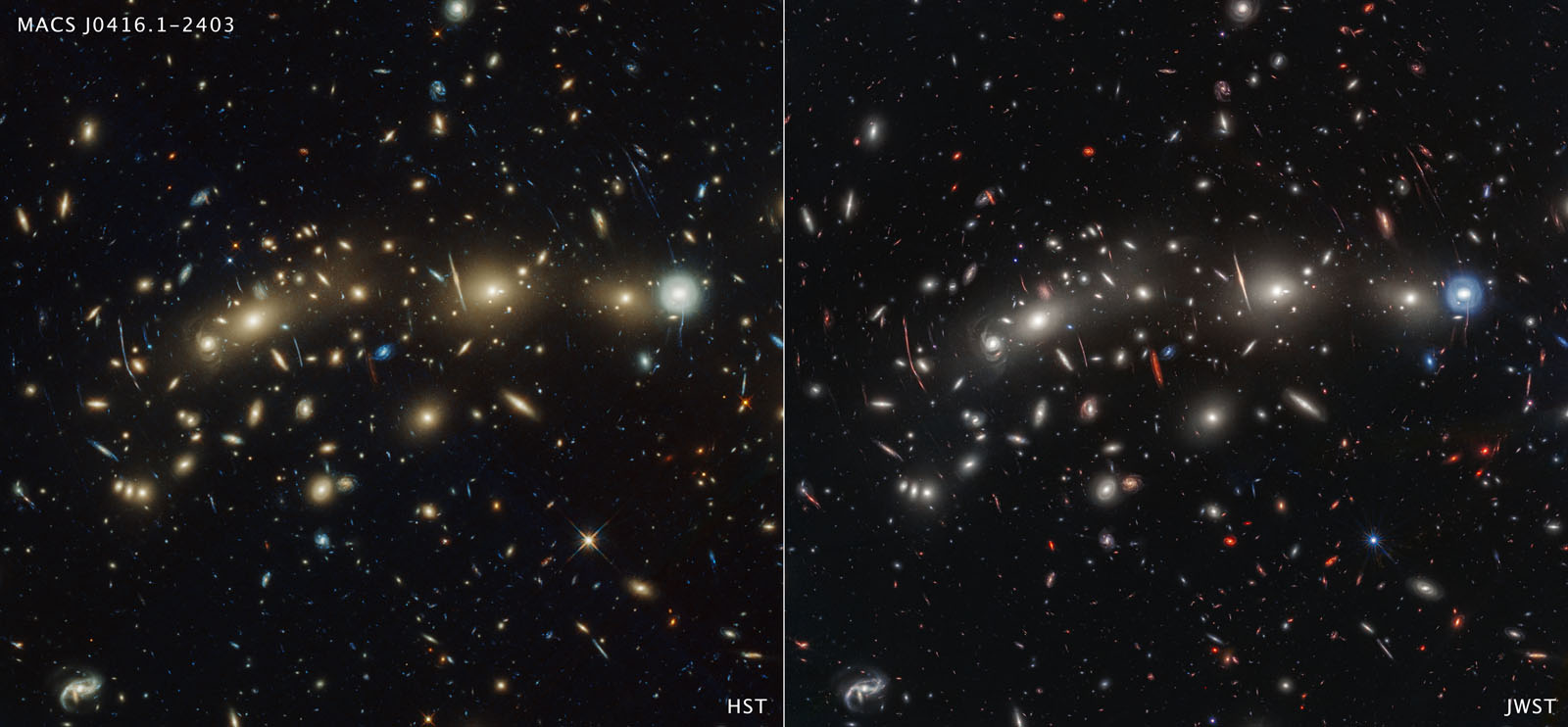
In any event, the chromatic composite of MACS0416 highlights not only the power of Hubble more than 33 years after it began its mission and the $10 billion James Webb Space Telescope’s groundbreaking imaging technology but also how incredible it is when the telescopes work together.
Image credits: NASA, ESA, CSA, STScI, J. Diego (Instituto de Física de Cantabria, Spain), J. D’Silva (U. Western Australia), A. Koekemoer (STScI), J. Summers & R. Windhorst (ASU), and H. Yan (U. Missouri) | Full-resolution images are available from the ESA.